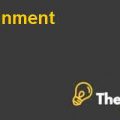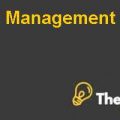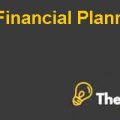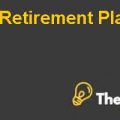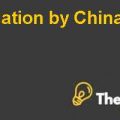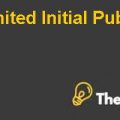Weighted Average Cost of Capital
Weighted Avergae Cost of capital or WACC is the average rate of return of the company that a company expect to compensate on average all the provider of finance. Percenatge of WACC depends upon the cost and the percentage of the source of the funds,if more of inexpensive source is used than overall WACC will be reduced than using less amount of inexpensive source of funds.
Target Company’s weighted average cost of capital can be calculated by using the financial data that can easily be available for the annual financial statement. For calculation of WACC, elements such as the market value of debt, the market value of equity, cost of capital, cost of debt and tax rate should be first calculated using different assumptions from the financial statements.
Target company each element that used in the calculation is as follows;
Market Value of Equity
The market value of equity of Target Company can be calculated by using the current share price at the closing date of the financial which is 31st January 2015 and outstanding shares. By applying this formula, the market capitalization of the Target Company is estimated to be $43.742 Billion.
Market Value of Debt
The market value of debt can be estimated using the debt instruments which Target has issued in the debt market. An example of such debt instrument that can be revalued is corporate bonds. Bank loans are assumed to be having no market value and used to be valued at cost. It is assumed that the market value of the Debt of Target Company is $27.716 Billion. This amount includes the debt such as long-term debt which is valued to be $11.982 Billion, Capital lease obligation is valued to be $1.403 Billion, deferred compensation $541 million real state liabilities that is valued to be $39 million. While under unrecorded contractual obligation interest payment on long-term debt is $7.309 Billion, operating leases stand at $3.827 Billion, purchases obligation is valued at $2.411 Billion and real estate obligation is valued at $204 million.
Cost of Equity
The cost of equity can be calculated using different methods such as a dividend valuation model, CAPM and through ROE.Through dividend valuation method is procedure for valuing the price of the and can same be used to calculate the cost of equity if rearranged the formula. The formula for dividend valuation formula is
This given formula can be rearrange to calculate the discount rate or cost of equity such as follow,
Another method to calculate the cost of equity is Capital Asset Pricing Model or CAPM is model that describes the relation between risk and the rxpected return. The formula of CAPM is as follow,
Cost of equity calculated through CAPM is used in calculations of the WACC and assessing the project.
Target Company’s cost of equity calculated using ROE. Return on equity can be using the net profit divided by shareholder equity. Target Company’s net profit in financial year 2014-15 was $3.653 Billion and while in the same financial year shareholder equity was valued at $13.997 Billion therefore, by dividing net profit by shareholder capital cost of equity is assumed to be 26.10%
WACC of Target Company Case Solution
Cost of debt
The cost of debt can be calculated using the different method such as from the indenture, implied rate, but the average rate of debt can be taken from the Target Company from its annual financial statement. Interest expenses are divided by the amount of debt outstanding in the balance sheet. By dividing the amount of interest which is $ 1.126 Billion in the year 2013 dividend by an outstanding amount of debt gives the before-tax cost of debt of 4.06% while interest is tax deductible. Comapies benfit from the tax deduction on the amount of interest paid that is why companies ofen used amount of dent to reduce the total cost of capital and benefit from the tax deduction. Loan is also a inexpensive source of finance than the amount raise from the shareholder as equity finance is expensive due to risk is more than the debt that is why shareholder demand more return on their investment. Debt is ofen secure and in some cases is secured against the asset of the company where as there is no such thing involve in the equity financing.
The formula for calculating the cost of the debt is as follow,
Where as,
Rd is cost of issue new debt
Tc is coprate tax or marginal tax rate............
This is just a sample partial case solution. Please place the order on the website to order your own originally done case solution.


